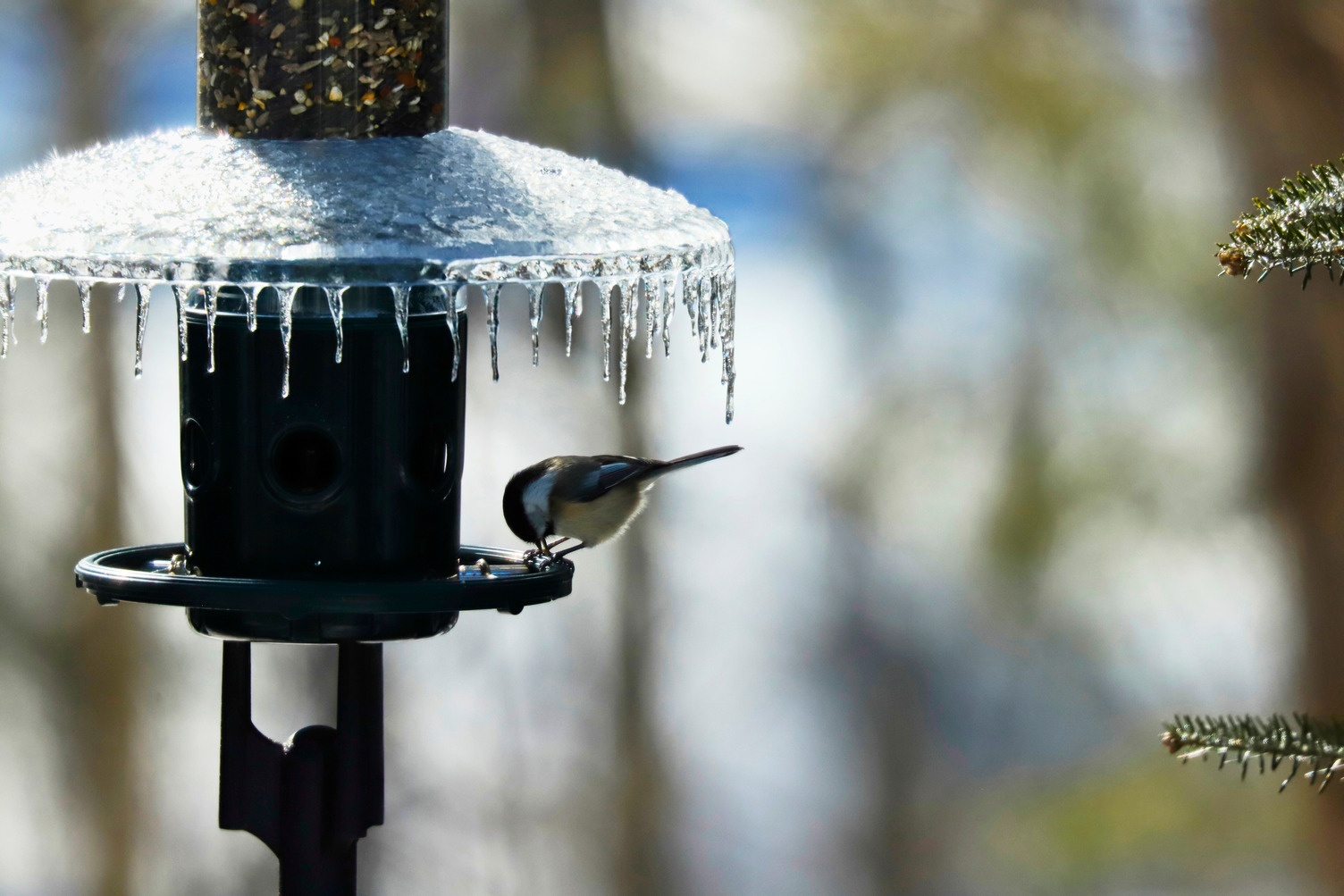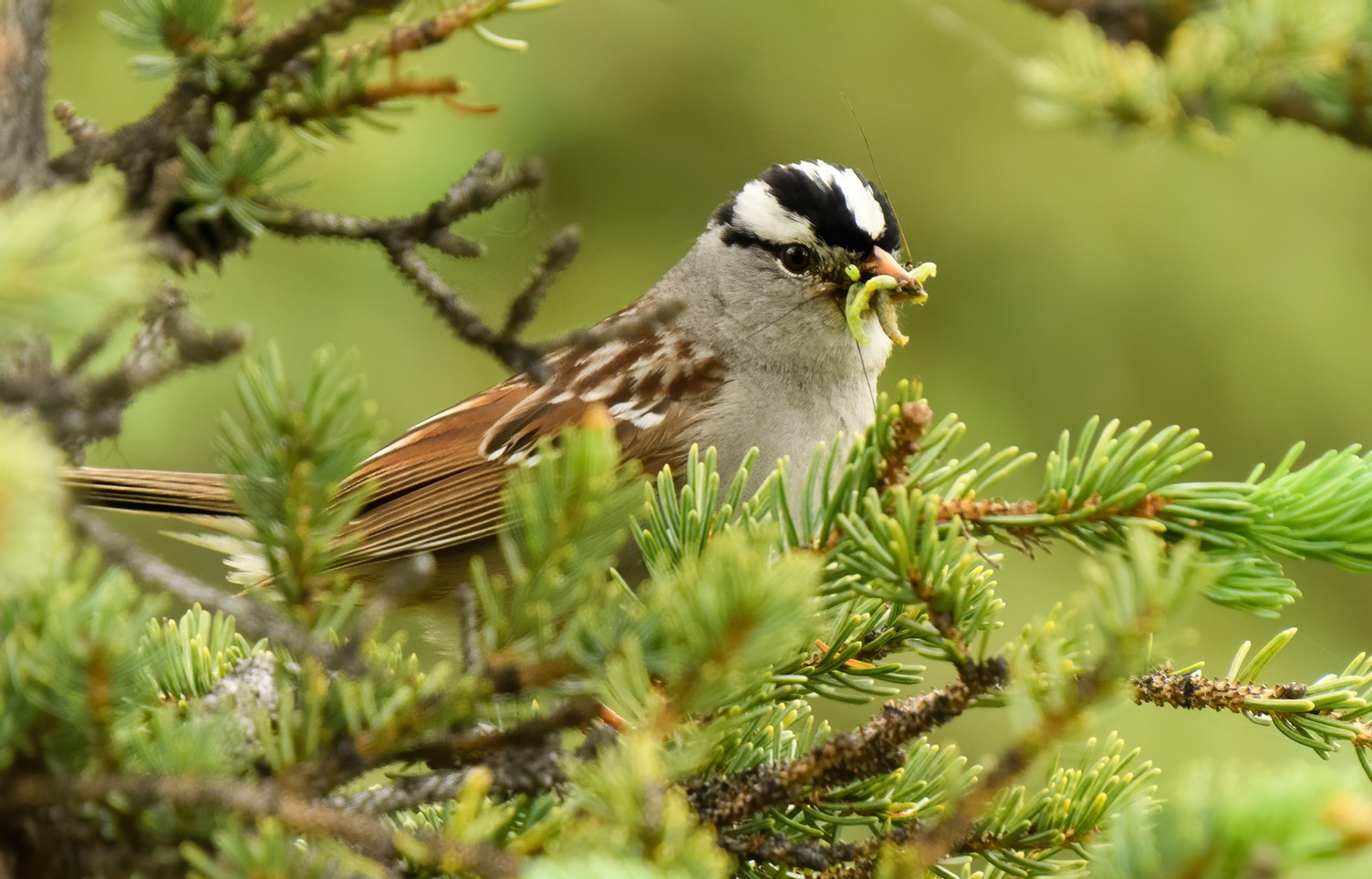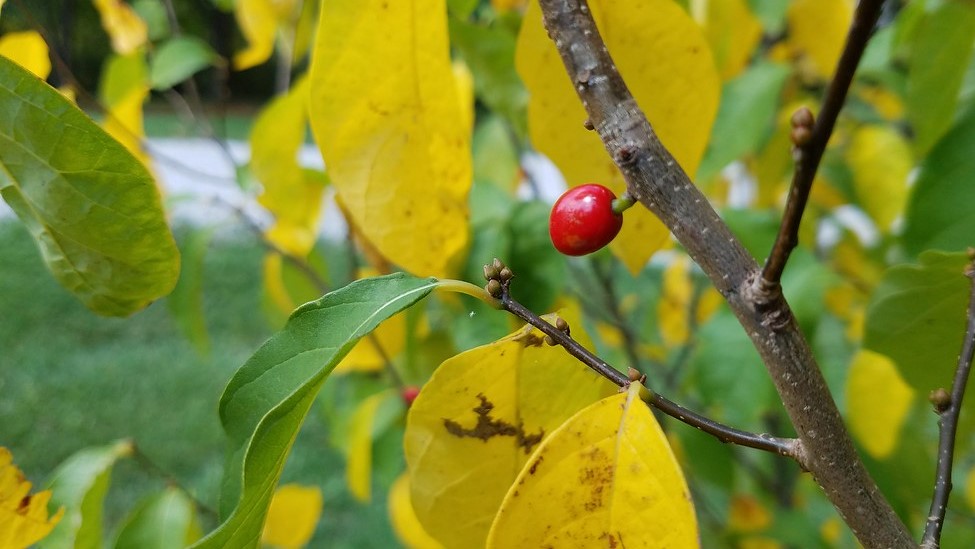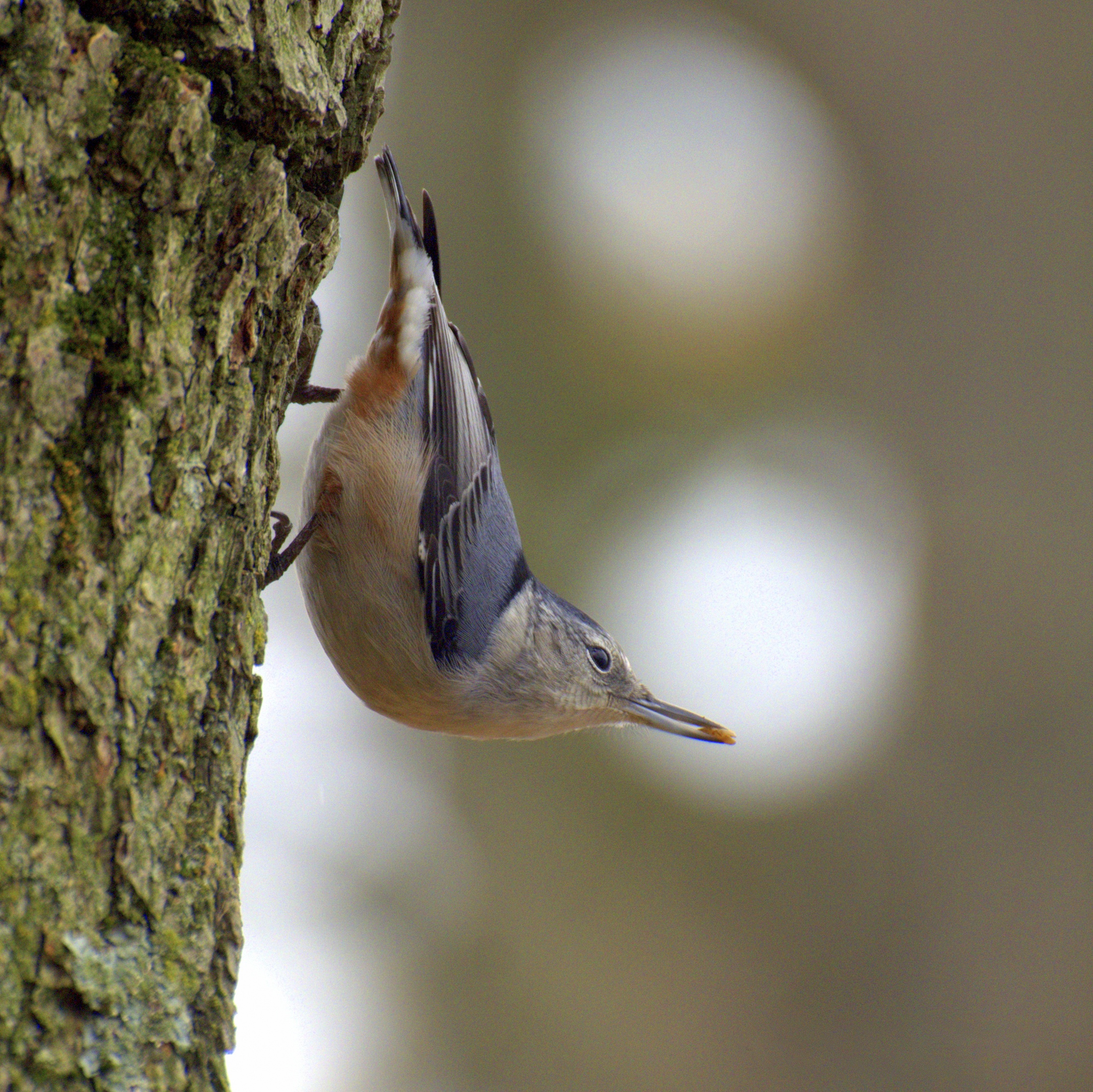We have much more to do and your continued support is needed now more than ever.
Year-Round Bird Feeding

Winter is a prime time to bring those bird feeders out and make a New Year’s resolution to provide food year-round for our feathered friends. Discover how birds’ diets change throughout the year and how you can support them in your garden.
A Year of Food for Birds
For many people, the phrase “bird feeding” sparks visions of filling tube feeders with sunflower seed and hanging suet cakes from snowy branches in winter. In reality, bird feeding can happen year-round in gardens, though it doesn’t always look like a hopper filled with seed.
Spring through Early Summer
For many bird species, this is nesting season—and not only are baby birds voracious eaters, they are also pickier about their food than you might expect! Even bird species that mostly eat seeds, nuts, or fruit will often solely feed their babies insects, particularly caterpillars, which are highly nutritious and protein-packed for the little ones. Because of this, birds need a large supply of caterpillars at this time of year. Just one chickadee can bring 350-570 caterpillars to the nest in one day to feed their young! That can mean up to 9,000 to feed just one brood.

In springtime, filling bird feeders full of seed will do very little to help these baby birds. Instead, plant a few keystone native plant species in your garden. These “keystone” species serve as host plants to several hundred caterpillar species, making them a perfect place for birds to forage for caterpillars to feed their young. While particularly important during nesting season, insects and arthropods of various kinds are vital food sources for many fully-grown birds year-round, too.
Find keystone species native to your region through our native plant finder.
Late Summer through Fall
As fall approaches, nature provides a buffet of high-fat foods including berries, seeds, nuts, and insects that help birds to bulk up for the cold of winter or for their long migrations. Native plants of many varieties including late-blooming flowers, grasses, and trees go to seed this time of year, offering a food source full of healthy fats to wildlife. Even the berries that ripen in this season tend to be fattier! The bright red spicebush berries that ripen in fall have a fat content of a whopping 35% to 50%, which is a huge leap up when compared to the relatively low-fat summer fruits like black raspberries, which often contain less than 1% fat.

As long as birds have access to many fruiting native plants at this time, supplemental foods like bird feeders are typically not needed until these food sources become depleted in winter. Instead, focus on making sure that your garden offers a good number of fall seeding or fruiting plants like asters, elderberry, sumac, juniper, and so many more.
Winter
As birds and other wildlife continue to feast on seeds and fruits still clinging to stems, food sources begin to dwindle in winter. At the same time, active insects become harder to find as the temperature drops. This time of year, birds of many species get crafty. Some birds, including nuthatches and chickadees, hide cached seeds and even arthropods behind loose bark or in holes. Others, like the yellow-bellied sapsucker, will even drink the sweet sap from trees to get some much-needed sugar. However crafty these birds may be, alarming decreases in available habitat mean that an already difficult time of year for foraging is becoming even harder, all while birds are dealing with the need to expend extra energy keeping their bodies warm.

This makes winter the perfect time to offer supplemental food sources via bird feeders. Providing a mixture of high-quality food varieties (seeds, dried fruit, dried mealworms, and suet) while also avoiding filler foods that don’t provide as much nutritional value (milo, corn, or millet) can attract a wide variety of bird species to your garden and help get them through the cold winter months.
Learn more about providing supplemental food in our Bird Feeders Tip Sheet!
Winter is also a great time to start planning your backyard bird banquet for the coming year. Take stock and ensure that your garden offers food for birds year-round in the form of new host plants for caterpillars as well as plenty of seed, fruit, and nut producing plants. Then, consider challenging yourself to provide year-round water for your backyard birds next!
Garden for Wildlife
Join the National Wildlife Federation’s Garden for Wildlife/Certified Wildlife Habitat® movement! Here’s a checklist of things you can do in your own yard or garden this fall to make it better for the birds, butterflies, bees and other wildlife.





















